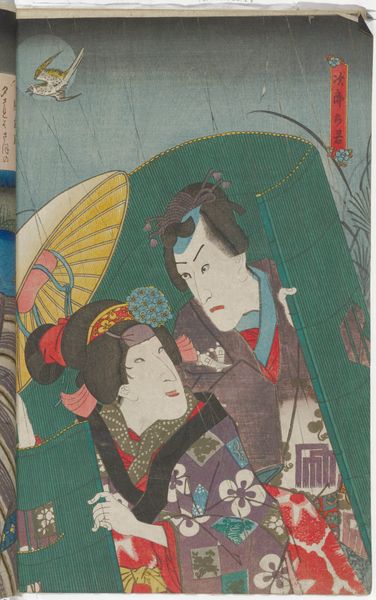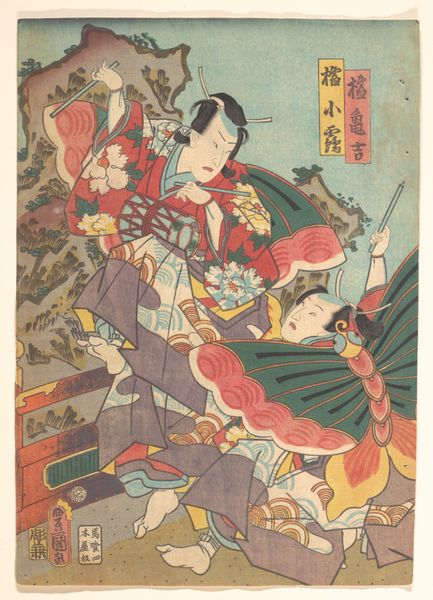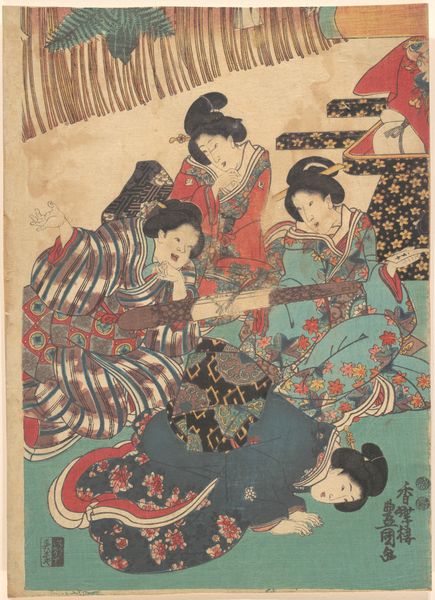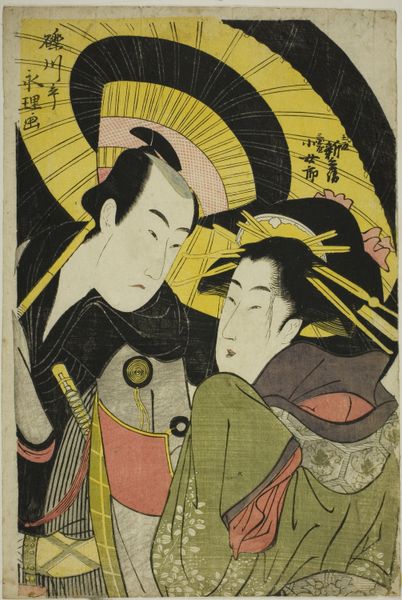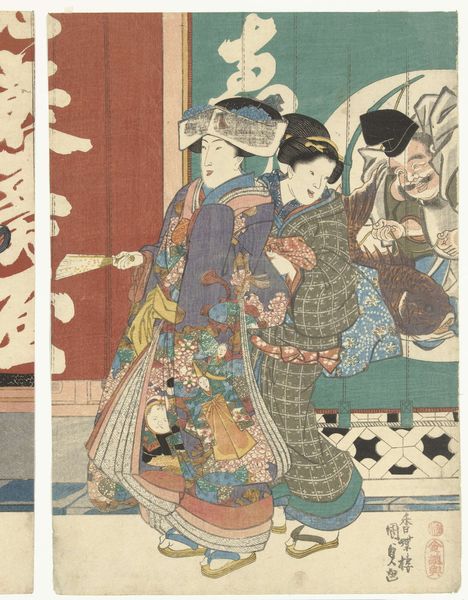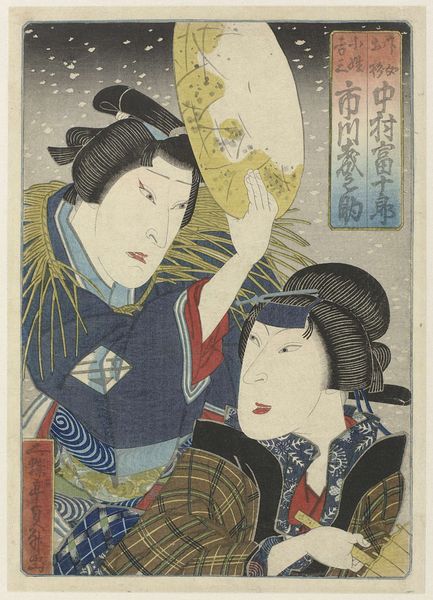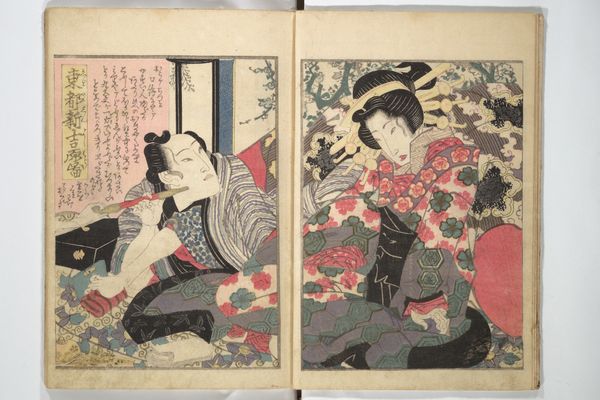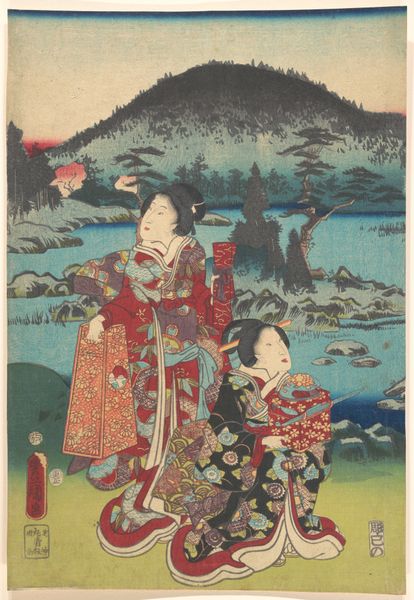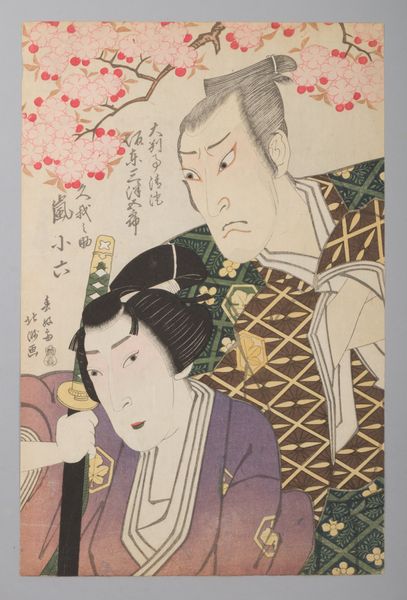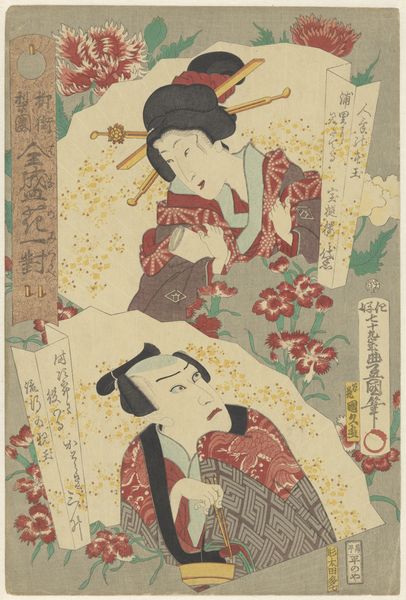
Actors Ichikawa Danjūrō VIII as Eboshiori Motome (R) and Iwai Kumesaburō III as Princess Tachibana (L) Possibly 1852 - 1853
0:00
0:00
print, ink
#
portrait
# print
#
ukiyo-e
#
figuration
#
ink
Dimensions: 14 3/8 × 9 5/8 in. (36.5 × 24.5 cm) (image, sheet, vertical ōban)
Copyright: Public Domain
Curator: Utagawa Kunisada’s print, likely dating from 1852 or 1853, features actors Ichikawa Danjūrō VIII and Iwai Kumesaburō III in character. It's a striking example of ukiyo-e portraiture, currently held at the Minneapolis Institute of Art. Editor: The first thing that jumps out is the density of the pattern work. The floral designs on the figures' garments are quite overwhelming and dominate the visual field. It feels intentionally opulent, though. Curator: Absolutely. Think about the role of actors, particularly Kabuki actors in the Edo period. They were both celebrities and often figures of societal transgression, reflecting anxieties around class and gender. The lavish fabrics and makeup served to amplify their performative identities. Editor: Focusing on that performativity, the means by which that luxury is communicated, it seems heavily reliant on printmaking conventions. We are seeing what appears to be high status textiles represented, but really it is achieved through a very careful, considered material process. Curator: Precisely. The meticulous carving of the woodblocks to achieve these intricate patterns highlights a deliberate engagement with artifice. Consider the history of the woodblock print: it democratized images but also controlled their dissemination. What message was the artist intending to communicate to the masses? What stereotypes might these actors be enacting in representing their roles? Editor: I also keep coming back to the colour palette—that very saturated use of ink. I imagine the paper it’s printed on also affects how we view these colours now. The condition of the paper as a material contributes greatly to how the artwork speaks. Curator: The paper provides clues as to how these images might have circulated and aged within their social environment. This form of art would have influenced the popular ideas of the period. Thinking through the layers and implications is crucial for understanding what exactly the work says, what it is representative of, and even the ways audiences reacted to it. Editor: A final thought: paying attention to how the materiality influences social context gives us a richer appreciation of what a work means and does.
